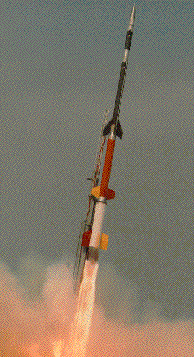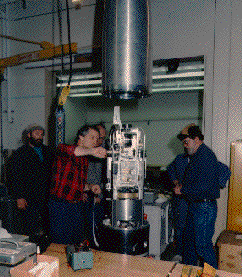|
Auroral Sounding Rockets |
|
|
|
|
  |
| The UCB auroral sounding rocket program designs, constructs, and launches small, solid fuel multi-stage sounding rockets to altitudes of up to 1400 km above the northern aurora to study particle acceleration and wave production relevant to auroral dynamics. The Earth's aurora is a circular region of intense electron precipitation encircling the northern polar cap, and the optical emissions seen from the ground are the result of the collisional excitation of nitrogen and oxygen as high energy electrons (1 - 20 keV) impact the upper atmosphere at about 100 km altitude. Ultimately the energy for this process flows from the solar wind into the Earth's magnetosphere, but exactly how this process occurs is still one of the unanswered questions in auroral physics. The goal of the sounding rocket program is to uncover the plasma micro-physics behind electron and ion acceleration and the role of the various plasma wave modes commonly observed above the visible aurora. |